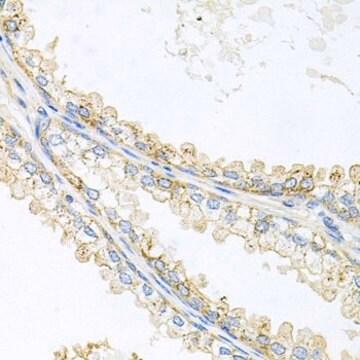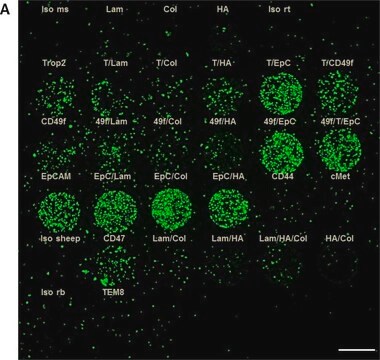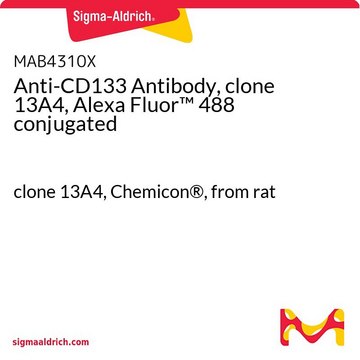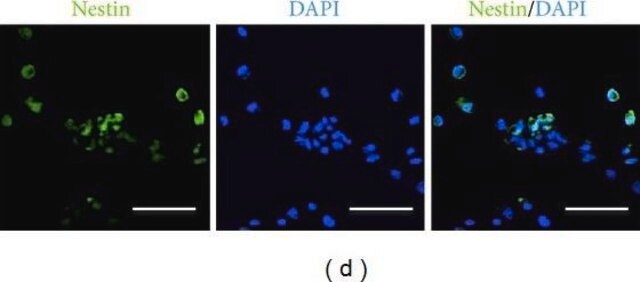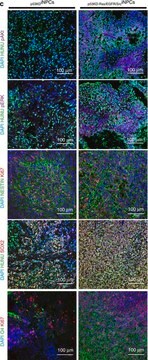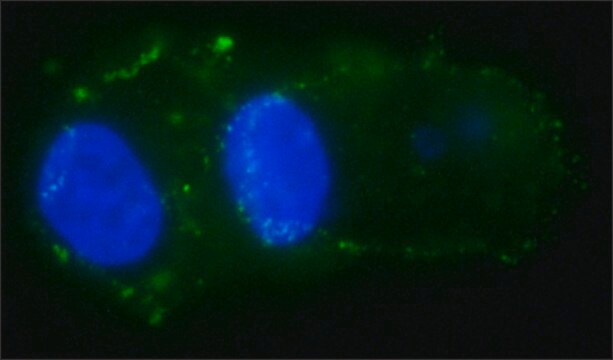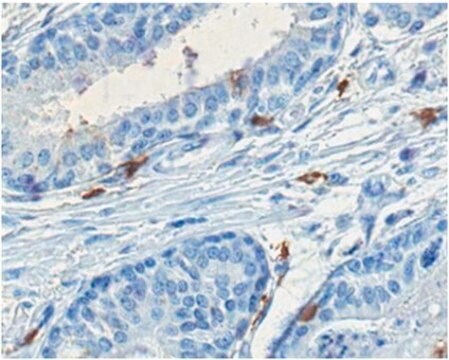MAB4310
Anti-CD133 Antibody, clone 13A4
clone 13A4, Chemicon®, from rat
Synonyme(s) :
Prominin-1, AC133 (human)
About This Item
Produits recommandés
Source biologique
rat
Niveau de qualité
Forme d'anticorps
purified immunoglobulin
Type de produit anticorps
primary antibodies
Clone
13A4, monoclonal
Espèces réactives
mouse
Ne doit pas réagir avec
chicken, Drosophila, rat
Fabricant/nom de marque
Chemicon®
Technique(s)
flow cytometry: suitable
immunohistochemistry: suitable
immunoprecipitation (IP): suitable
western blot: suitable
Entrée
sample type hematopoietic stem cell(s)
sample type neural stem cell(s)
sample type epithelial cells
sample type: mouse embryonic stem cell(s)
sample type mesenchymal stem cell(s)
Isotype
IgG1κ
Adéquation
not suitable for immunohistochemistry (Paraffin)
Numéro d'accès NCBI
Numéro d'accès UniProt
Conditions d'expédition
wet ice
Modification post-traductionnelle de la cible
unmodified
Informations sur le gène
dog ... Prom1(488816)
human ... PROM1(8842)
mouse ... Prom1(19126)
rat ... Prom1(60357)
Description générale
Spécificité
This antibody can be used to isolate murine stem cells from brain and bone marrow.
The 13A4 antibody does not cross react with rat, human, chicken, or Drosophila antigen. The original paper is located at: http://www.pnas.org/cgi/reprint/94/23/12425.pdf
Immunogène
Application
Western Blot Analysis: A 1:1000 dilution from a representative lot detected CD133 in monkey kidney lysate.
Stem Cell Research
Neural Stem Cells
Hematopoietic Stem Cells
Description de la cible
Forme physique
Stockage et stabilité
Remarque sur l'analyse
Positive Control: Kidney tissue or membranes
Negative Control: Liver tissue or membranes
Autres remarques
Informations légales
Clause de non-responsabilité
Vous ne trouvez pas le bon produit ?
Essayez notre Outil de sélection de produits.
Code de la classe de stockage
10 - Combustible liquids
Classe de danger pour l'eau (WGK)
WGK 2
Point d'éclair (°F)
Not applicable
Point d'éclair (°C)
Not applicable
Certificats d'analyse (COA)
Recherchez un Certificats d'analyse (COA) en saisissant le numéro de lot du produit. Les numéros de lot figurent sur l'étiquette du produit après les mots "Lot" ou "Batch".
Déjà en possession de ce produit ?
Retrouvez la documentation relative aux produits que vous avez récemment achetés dans la Bibliothèque de documents.
Notre équipe de scientifiques dispose d'une expérience dans tous les secteurs de la recherche, notamment en sciences de la vie, science des matériaux, synthèse chimique, chromatographie, analyse et dans de nombreux autres domaines..
Contacter notre Service technique
